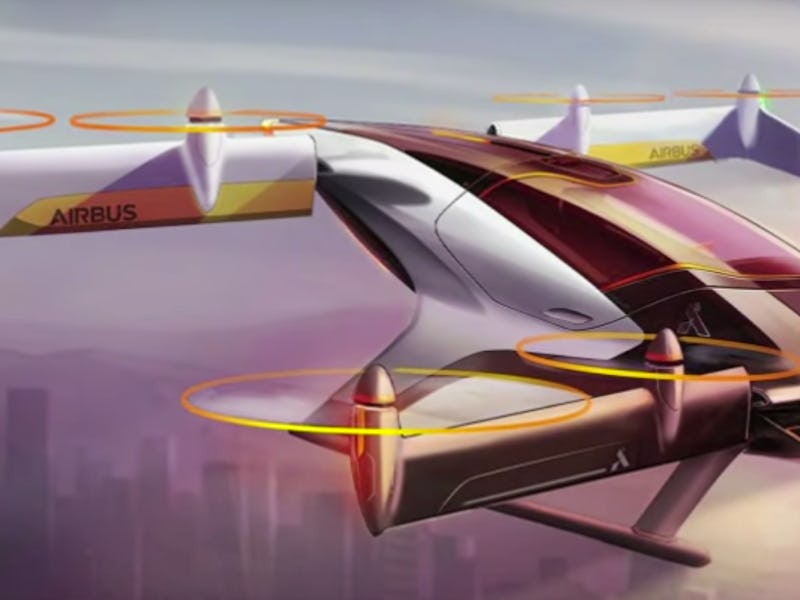Researchers Say Autonomous Air Taxis Are 10 to 15 Years Away

While automakers work to roll out autonomous cars, a number of companies have turned their sights to a different kind of autonomous vehicle – flying air taxis. And as outlandish as it seems, we could be ferried around in them in 10 to 15 years, researchers say.
There are a number of obstacles autonomous flying cars need to overcome before they can launch, but a recent report from the Associated Press suggests that this can happen within 15 years. Projects like Airbus’s Vahana or Urban Aeronautics’ Cormorant are racing to fly customers around cities, but before air-taxiscan become a reality, lawmakers will have to update FAA regulations, and developers will have to refine sensor technology and lightweight batteries to get things off the ground.
“In terms of what you can make fly in a reliable manner, the solution speed gateway that (computer) chips have gone through recently have literally opened the door to a whole new world of flying machine possibilities,” Charles Eastlake, a professor of aerospace engineering at Embry-Riddle University, told the AP. “My best engineering guess is that people actually using autonomous air taxis in the next 10 or 15 years is possible, but definitely not certain. The challenges are big.”
Advances in computer technology have certainly accelerated the field, but the challenges are in fields beyond just computer tech. Lightweight batteries are a major issue for autonomous air taxis. In electric cars, battery weight is already an issue, but at least we’re not trying to launch them off the ground. In November, the worlds first battery powered helicopter took flight – proving that it’s possible but it only has a battery life of 20 minutes, which isn’t feasible for air taxis.
Also, the autonomous sensory systems being used in autonomous cars haven’t been manufactured for flight yet. The closest prototypes are really big ground controlled drones.
However, the technical limitations aren’t slowing down the predictions of the Airbus team. The Vahana is expected to have a prototype floating around this year, and the CEO has said that he thinks autonomous flying is an easier problem to solve than autonomous driving. Airbus has also previously stated that it wants to have the Vahana in cities in 2020. Zach Lovering, the head of the project told the AP, “In as little as 10 years, products could be on the market that revolutionize urban travel for millions of people.”
And vehicles like Urban Aeronautic’s Cormorant already have working prototypes of some of the technical elements needed for air taxis, like the vertical takeoff and landing Uber suggested would be necessary for air taxis working in urban environments. However, once we have the technology, there is still the regulation question.
“There’s no question we can build the vehicle,” John Hansman an MIT professor who advises the FAA, told the AP. “The big challenge is whether we can build a vehicle that would be allowed to operate in the places where people want to use it.
He also told the AP that he thinks it will actually be the ground infrastructure that will be the most limiting for use of the technology. The real takeaway is that we can actually build flying cars, and it’s just getting them into cities in the most useful way that’s the tricky bit.